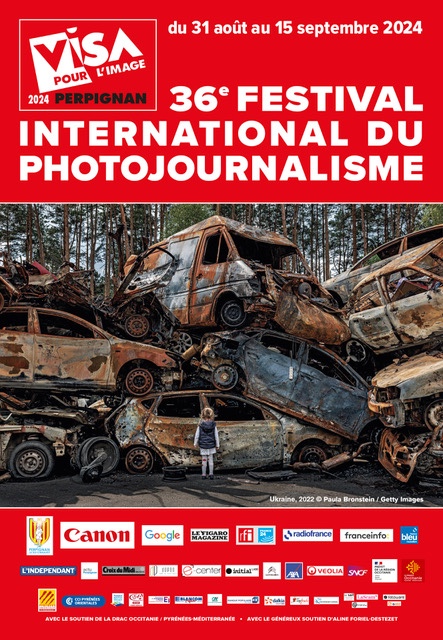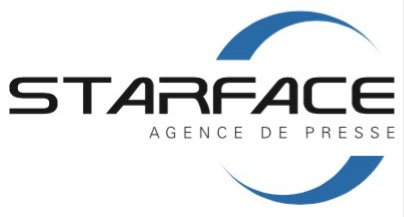
![]()
This year, the Gilles Caron Foundation is publishing two exceptional books for photography enthusiasts, upholding the Foundation’s mission established by the photographer’s family: keep his work alive, maintain the photographer’s notoriety.
Gilles Edouard Denis Caron was born in Neuilly-sur-Seine on July 11, 1939, and perished on April 5, 1970 while traveling on Route 1 connecting Phnom Penh (Cambodia) to Saigon (Vietnam) after having crossed the Mekong River with Guy Hannoteaux and Michel Visot. Before leaving, he commented to Robert Pledge: “This will be my last trip to Cambodia. I’ll be staying in Phnom Penh, I won’t take any risks.”
A disappearance is worse than a violent death. Uncertainty remains. It lasts for months. For years we believed he was taken prisoner. It wasn’t until September 22, 1978, that a Parisian court would finally confirm Gilles Caron’s death.
Read more in La Lettre de la photographie
For a generation of baby-boomers, and now for their children and grandchildren, Gilles Caron is an icon. He is to photojournalism what James Dean was to cinema, Buddy Holly to rock and roll: a hero killed in the height of his youth.
On the final contact sheet (n°19 601) sent from Cambodia to the Gamma agency, the film began with family pictures taken just prior to his departure. Pictures of Marjolaine and Clementine, daughters born from the love of his life, Marie Anne Léone François Garceau otherwise known as Marianne who he married on October 3, 1962 upon returning from the war in Algeria. They met when they were 13 years old. “He used to say to me, we will get married and have triplets.”
The Gilles Caron ScrapBook will be presented alongside other Art Books, and it is well deserved. It is a family photo album, Gilles Caron with his mother, his father, his wife, his cousins… But it is also the album of a photographer from the ‘50’s and ‘60’s with his publications of the time.
The book reveals, with pictures and letters, his childhood, his youth, and his early days as a young man referred to as “Gillou” by his mother and colleagues. From the Notre-Dame des Neiges d’Argentières (Haute-Savoie) private school where he was sent after his parents’ divorce, he wrote surprisingly mature letters to his mother. She sent him equally as astonishing letters. “She always treated him like a responsible person” confided Marianne Caron-Montely last Thursday at the Thierry Marlat Gallery, before adding “they had a relationship of equality. It was character building for Gilles. During his military service in Algeria, Gilles became political. He wrote to his mother about what he saw, and she participated in demonstrations against the war in Algeria!”
His passion for such sports as skiing and horseback riding led to his work on the frontlines as a parachutist for this war without a name. “They told us that parachutists attacked, that they were attacked and killed, but that they let others declare victory. Nice program” he wrote to his “Dear Mother” in December 1959. Released from the army in April, 1962, he married, and his first daughter Marjolaine was born. He developed a friendship with André Derain who would lead him to photography.
From Agency to Agency, he would become a star at Gamma
On March 17, 1965, the Parisian Agency for Social Information (APIS) recorded his first story: Lino Ventura and Charles Aznavour. He continued working in show business and politics, covering such celebrities as Claude François, Marguerite Duras and Jean Genet… The following year, he would leave APIS for VIZO, then for the Photo Department at Giancarlo Botti… a traditional career path taken by many young photographers looking for the right photo agency.
The Gamma Agency was founded in December, 1966, and was looking for new talents. Raymond Depardon had just entered the new agency and, as Gilles Caron would be quoted in Hubert Henrollte’s book “Le Monde dans les yeux”, “I had never seen a photographer read Le Monde in the Elysée courtyard while waiting for the Minister’s Council to end”. As a stringer, he began by covering local Parisian news. But in the spring of 1967, Monique Kouznetzoff who was already running the celebrity department at Gamma, sent him to Israel to cover “yeye”, Sylvie Vartan’s first clothing line. He arrived just as the Six Day War began! He was incredible, crossing the Sinaï with Israeli soldiers, all the way to the Egyptian border. The result: 18 pages in Paris Match!
The following year he would leave for Vietnam. “In Dak To for example, you really didn’t know what to do. You covered what was going on, everything that you saw” he commented to Claude Gontrand in 1969 for the magazine Zoom. His pictures were extraordinary, “already as talented as Larry Burrows, Jones Griffiths, Eugene Smith, James Nachtwey, Eddy Adams or Don McCullin” commented the Director of Gamma and Sygma despite his rare penchant for compliments. Talking about Hubert Henrotte, it is essential to reveal the December 2, 1967 fax published in his book:
“Dear Gillou, This morning I received your letter from the 26th, you said you hadn’t received my telegram announcing the arrival and exceptional quality of your story on the hill, I hope you will receive it because we were so proud of you, that we sent it at 3am …” Monteaux (Gamma salesman-associate) whose bad moods and critical eye you know well also made this comment when looking at your contact sheets: “After ten years in this business, I have never had such an immense satisfaction, they are the best war pictures I have ever seen!”
The following year, with great journalistic flair, Flors de Bonneville, senior editor, sent Gilles Caron to “cover” the Biafra secessionist movement, this war long forgotten by History that returned to the front pages of Nigerian news. He would also have some amazing pictures in the field despite the tough competition including Don Mc Cullin.
Then suddenly, Paris would burn: May 1968. On the first day, when students from Nanterre would occupy the Sorbonne, he would take the legendary picture of Daniel Cohn Bendit taunting a police officer under his nose. It would travel around the world and would become the iconic image of the spirit of the student movement. “Not far, not expensive” is how reporters would refer to the war in Ireland. Of course he would go. He was commissioned by all of the world’s greatest magazines.
At the end of the 1960’s, his profession lost its charm. There were few exhibitions, no festivals, no prizes, and no interest for war reporters. Fashion photographers were just beginning to be recognized thanks to the movie “Blow Up”. Aside from Capa and Cartier-Bresson, the French totally ignored everything about photo reporters. For professionals, Gilles Caron was already a star, and young post-war photography enthusiasts would discover his work in Vietnam, Biafra and May 1968 in Photo magazine, just before his disappearance!
Hubert Henrotte wrote “Gilles Caron was one of the first to show his dissatisfaction at being simply referred to as a photographer. He was already what the great names of this business would be called, a photojournalist.” Which is why the album “Gilles Caron Scrap Book” and his correspondence “J’ai voulu voir”, alas only printed in French, are two important books.
Behind the pictures and the myth, we discover the man. A sentimental and thoughtful man, curious about the people around him. A true journalist whose short life was rich with life’s lessons. The Gilles Caron Foundation did an amazing amount of work to publish these two books, devoting its feeble subsidies, and is still lacking the funds to digitize the photographer’s production, including the 736 rolls of film “found” in a Normandy “bunker” whose contact sheets were too damaged to discover new pictures.
By purchasing the Gilles Caron Scrap Book, you add your contribution to an essential element of photojournalistic history.
Michel Puech
Gilles Caron Scrap Book de la Fondation Gilles Caron (Editions Lienart) 40 euros in bookstores on February 9 2012 (français/anglais)
J’ai voulu voir Gilles Caron (Editions Calmann-Lévy) 22,50 euros currently on sale in French.
Exhibition
Gilles Caron, ScrapBook
Until February 25, 2012
Galerie Thierry Marlat
2 rue de Jarente
75004 ParisDernière révision le 3 mars 2024 à 7;15 par Michel Puech
- Maurice Achard
« Même quand il fait beau… » - 12 juillet 2024 - « Mimi » Marchand
Bestimage for ever ? - 14 juin 2024 - Villa Tamaris
Yvette, « l’intrépide aviatrice » photographiée par Robert Doisneau - 31 mai 2024




